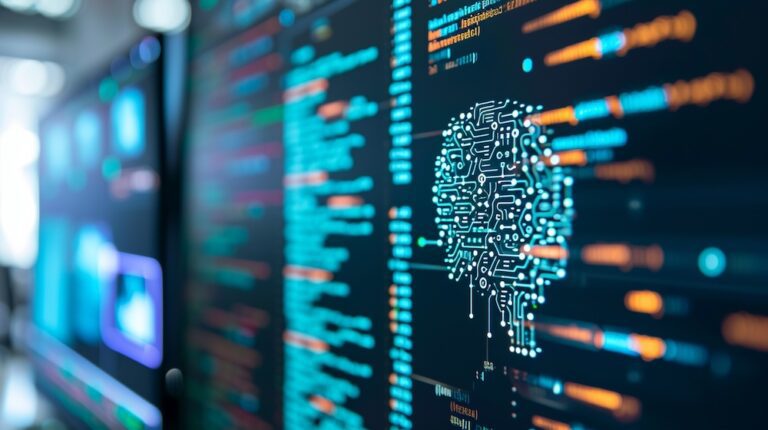
What Is AI Safety?
AI safety is a branch of AI research that focuses on ensuring that artificial intelligence systems are safe, reliable, ethical, and beneficial to humanity. It aims to develop methods to ensure AI systems behave as intended, even when faced with complex tasks or unexpected situations. AI safety is a multidisciplinary field that involves computer science, ethics, law, psychology, and sociology.
As AI systems become more complex and capable, the potential for harm increases if they are not properly designed or controlled. This is not just about preventing catastrophic failure, but also about avoiding more subtle issues such as bias in decision-making or misuse of personal data.
AI safety aims to ensure that AI benefits all of humanity. This means ensuring that the benefits of AI are distributed equitably and that the development of AI does not lead to increased inequality or other societal harms. It’s about creating AI that respects our values, rights, and freedoms.
Fundamental Principles of AI Safety
Alignment: Ensuring AI Goals Match Human Values
One of the key principles of AI safety is alignment, which refers to the idea that the goals of an AI system should be aligned with human values. This is important because if an AI system’s goals do not align with our values, it could act in ways that are harmful or undesirable.
Alignment is a complex and multifaceted issue. It involves technical challenges, such as how to program an AI to understand and respect human values, as well as ethical and philosophical questions about what those values are and how they should be defined.
Despite these challenges, alignment is a critical aspect of AI safety. Without alignment, even the most advanced and capable AI system could become a liability rather than an asset.
Robustness: Building AI to Withstand Manipulation and Errors
Robustness refers to the ability of an AI system to perform reliably and correctly, even in the face of errors, uncertainties, or adversarial attacks. AI systems often operate in complex and unpredictable environments, where they may encounter unexpected situations or be targeted by malicious actors.
Building robust AI requires careful design and rigorous testing. It involves creating AI systems that can handle a wide range of situations, while developing mechanisms to detect and respond to errors or attacks.
Robustness also involves building AI systems that are resilient and adaptable. These systems should be able to learn from their mistakes and adapt to new situations, ensuring that they continue to perform effectively and safely over time.
Transparency: Understanding AI Decision-Making Processes
Transparency refers to the ability to understand and explain the decisions made by an AI system. Transparency is important because it helps build trust in AI systems and allows for meaningful oversight and accountability.
Many AI systems are opaque and difficult to understand. This is often referred to as the “black box” problem. However, efforts are underway to develop methods and tools for improving the transparency of AI systems, including techniques for explainable AI and interpretable machine learning models.
Accountability: Establishing Responsibility for AI Actions
Accountability refers to the idea that there should be clear responsibility for the actions of an AI system. Accountability is important because it ensures that there are mechanisms in place to address any harm caused by an AI system and to prevent such harm from occurring in the future.
Accountability in AI involves multiple stakeholders, including the developers who create the AI, the organizations that deploy it, and the regulators who oversee its use. Each of these stakeholders has a role to play in ensuring that AI is used responsibly and ethically.
Accountability also involves establishing clear legal and ethical frameworks for AI. These frameworks should define the rights and responsibilities of different stakeholders and provide mechanisms for addressing any harm or misconduct.
Learn more in our detailed guide to responsible AI
Challenges in AI Safety and Security
There are several fundamental challenges organizations, institutions, and governments face when attempting to apply AI safety principles:
Complexity of AI Systems
AI systems often involve intricate algorithms and large amounts of data, making it difficult to predict, understand, and control their behavior fully. They are typically designed to learn and adapt over time, which adds another layer of complexity as their functionality can change based on new information and experiences.
This complexity can also lead to difficulties in pinpointing the root cause when something goes wrong. Was it a flaw in the algorithm, bias in the dataset, or overfitting during training? This uncertainty can make it challenging to ensure AI Safety and prevent similar issues from occurring in the future.
The complexity of AI systems can also make them vulnerable to attacks. Hackers can carry out attacks such as training dataset poisoning or prompt injection, aimed at manipulating the model or underlying mechanisms (see the recently released OWASP LLM Top 10 security risks). Ensuring the security of these complex systems is a considerable challenge in AI safety.
Unpredictability of Advanced AI Behavior
As AI systems become more sophisticated, they can start to exhibit behaviors that were not explicitly intended by their creators. This can lead to unexpected and potentially harmful outcomes.
For example, an AI might learn to take shortcuts that achieve its objective but are undesirable or harmful in the real world. This unpredictability can be particularly concerning in areas like autonomous vehicles or healthcare, where unexpected AI behavior could have severe consequences.
The unpredictability of AI behavior can also make it difficult to establish trust in these systems. If we cannot accurately predict how an AI will behave, we cannot trust it to make critical decisions or take actions on our behalf.
Risks of Autonomous Decision Making
AI systems are increasingly being designed to make decisions autonomously. While this can lead to more efficient and effective outcomes, it also introduces a new set of risks and challenges in AI Safety.
One of the main risks is that the AI might make a decision that is harmful or unethical. For example, an autonomous vehicle might have to decide between hitting a pedestrian or swerving and potentially harming the passengers. How does the AI make such a decision, and who is responsible if it makes the wrong one?
There is also the risk that the AI might be manipulated to make decisions that serve a particular individual or group’s interests at the expense of others, for example by purposely introducing biases into AI datasets. For example, some commentators complain about specific political leanings of large language models (LLMs), which they believe were intentionally induced by their creators. This could lead to unfair outcomes and a loss of trust in these systems.
Ethical and Moral Considerations in AI Development
In addition to technical challenges, there are also ethical and moral considerations in AI development. As AI systems become more advanced and autonomous, they are increasingly making decisions that have moral and ethical implications.
For example, should an AI be designed to prioritize the safety of its users over other individuals? Should it be allowed to make decisions that could potentially harm humans? These are complex ethical questions that require careful consideration and input from various stakeholders.
There is also the issue of transparency and accountability in AI development. Who is responsible when an AI causes harm? How can we ensure that the development of these systems is transparent and accountable? These ethical and moral considerations are critical to ensuring AI safety.
What Is Being Done to Boost AI Safety?
Fortunately, there are several measures that are being taken to improve the ethicality and safety of AI systems.
Technical AI Safety Research
In response to the challenges mentioned above, there is a growing focus on technical AI safety research. This involves developing techniques and approaches to make AI systems safer and more reliable.
For example, researchers are working on ways to make AI algorithms more transparent and interpretable, so we can better understand and predict their behavior. They are also exploring methods to ensure that AI systems remain under human control and do not take undesired actions.
There is also research being done on robustness in AI systems. This involves making the AI more resilient to changes in its environment or inputs, reducing the likelihood of unexpected behavior.
Global AI Safety Summit
In 2023, the United Kingdom government hosted the first Global AI Safety Summit, bringing together researchers, policymakers, and industry leaders from 28 countries to discuss and address challenges in AI safety. This is the first global forum aimed at defining and addressing the challenges of AI safety.
The AI Safety Summit serves as a platform for sharing the latest research, best practices, and strategies in AI safety. It also provides an opportunity for stakeholders to collaborate and coordinate their efforts, fostering a global approach to addressing these challenges.
AI Governance, Policy, and Strategy
There is a growing recognition of the need for robust AI governance, policy, and strategy to ensure AI Safety. This involves establishing rules and regulations that guide the development and use of AI systems.
For example, there might be policies that require transparency in AI algorithms, or regulations that hold developers accountable for the safety of their AI systems. There could also be strategies in place to manage the risks associated with autonomous AI decision making.
These governance structures need to be flexible and adaptable, able to evolve with the rapidly changing AI landscape. This is a critical component of ensuring AI safety in the long term.
Regulatory and Policy Frameworks for AI Safety
Several laws and regulations have been enacted in recent years to help keep AI safe. Let’s look at some of these.
U.S. Executive Order on Safe, Secure, and Trustworthy AI
The U.S. Executive Order on Safe, Secure, and Trustworthy AI, issued by President Biden in October 2023, aims to position the U.S at the forefront of AI innovation while ensuring the technology is utilized responsibly. This directive establishes new benchmarks for AI safety and security, aiming to protect Americans’ privacy, advance equity and civil rights, support consumers and workers, stimulate innovation and competition, and reinforce American leadership globally.
Key directives of the Executive Order include mandating developers of high-impact AI systems to disclose safety test outcomes and pertinent data to the U.S. government. It also tasks the National Institute of Standards and Technology with formulating stringent standards and red-team testing protocols to verify AI safety prior to public deployment. Additional measures focus on shielding Americans from AI-induced fraud and deception, enhancing cybersecurity through AI tools, and guiding the military and intelligence community in the ethical and effective utilization of AI.
Furthermore, the Executive Order underscores the need for bipartisan data privacy legislation to fortify privacy protections against AI-related risks. It also advances equity and civil rights by preventing AI algorithms from exacerbating discrimination and emphasizes consumer, patient, and student welfare by advocating the responsible employment of AI in healthcare and education. Lastly, the directive supports workforce development in the face of AI-driven changes in the job market and promotes innovation and competition by facilitating AI research and development across various sectors.
United States’ National AI Initiative Act
The United States’ National AI Initiative Act, signed into law in late 2020, establishes a coordinated federal initiative aimed at accelerating AI research and development for the economic and national security of the U.S. The Act covers numerous aspects of AI development, including ensuring leadership in AI research and development, improving the AI workforce, fostering international cooperation, and promoting trustworthy AI systems.
The Act also establishes the National Artificial Intelligence Advisory Committee, which is tasked with advising the President and other federal officials on matters related to AI. This includes advising on AI research needs and priorities, ethical considerations related to AI, and the implications of AI on the workforce.
European Union’s Artificial Intelligence Act
The European Union (EU) has also been proactive in proposing regulations to ensure AI safety. In April 2021, the European Commission proposed the Artificial Intelligence Act, which, when it comes into effect in 2025, will be the first legal framework on AI in the EU.
The Act aims to ensure that AI systems used in the EU are safe and respect existing laws and values. It proposes certain requirements for high-risk AI systems, including transparency, human oversight, and robustness. The Act also proposes the establishment of a European Artificial Intelligence Board, which will be responsible for advising and assisting the Commission.
OECD Principles on Artificial Intelligence
In 2019, the Organisation for Economic Co-operation and Development (OECD) adopted the Principles on Artificial Intelligence. These principles, agreed upon by 42 countries, aim to promote AI that is innovative and trustworthy and that respects human rights and democratic values.
The principles include transparency, robustness, safety, fairness, and accountability. They also emphasize the importance of deploying AI in a manner that respects privacy and data protection, upholds transparency and explainability, and ensures accountability.
China’s New Generation Artificial Intelligence Governance Principles
China, a leading player in AI development, has also made strides in creating a regulatory framework for AI safety. In June 2019, China’s New Generation Artificial Intelligence Governance Expert Committee released the New Generation Artificial Intelligence Governance Principles.
These principles promote the responsible development and use of AI, emphasizing the importance of ensuring security, transparency, and controllability in AI systems. They also advocate for international cooperation in AI governance, promoting the establishment of a global AI ethics and governance framework.
Singapore’s Model AI Governance Framework
Singapore, a hub of AI innovation, has also taken significant steps to ensure AI safety. In January 2019, Singapore released its Model AI Governance Framework, the first in Asia to do so.
The framework provides detailed and implementable guidance to private sector organizations on how to address key ethical and governance issues when deploying AI solutions. It emphasizes the principles of explainability, transparency, fairness, and human-centricity in AI systems.
Kolena: Supporting AI Safety with ML Model Testing
Building responsible AI products that we and our customers can trust and rely on is not a one-time heroic effort or a new groundbreaking neural network architecture. It is a process of building a culture of AI quality in the organization that requires:
- Building high-fidelity test data
- A transparent model quality assurance process
- Testing end to end products not just the model
We built Kolena to make robust and systematic ML testing easy and accessible for all organizations.
With Kolena, machine learning engineers and data scientists can uncover hidden machine learning model behaviors, easily identify gaps in the test data coverage, and truly learn where and why a model is underperforming, all in minutes not weeks. Kolena’s AI / ML model testing and validation solution helps developers build safe, reliable, and fair systems by allowing companies to instantly stitch together razor-sharp test cases from their data sets, enabling them to scrutinize AI/ML models in the precise scenarios those models will be unleashed upon the real world. Kolena platform transforms the current nature of AI development from experimental into an engineering discipline that can be trusted and automated.
Reach out to us to learn how the Kolena platform can help build a culture of AI quality for your team.



